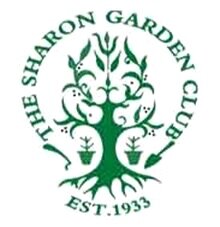
Some useful information…….
30 Plants That Pay The Rent
Landscape Design by Adriana O’Sullivan, inspired by Nature
PERENNIALS
1. Alchemilla mollis – Lady’s Mantle
2. Bulbs: crocus, iris reticulata, tulips, daffodils, camassia, allium
3. Clematis
4. Euphorbia polychroma- Cushion Spurge
5. Geranium x ‘Rozanne’ & ‘Biokovo’ + ‘Karmina’ – Cranesbill Geranium
6. Helleborus orientalis, Helleborus niger, Helleborus foetidus
7. Hemerocallis, Daylilies
8. Heuchera, purple, variegated, lime, caramel, etc.
9. Hostas: June, Northern Halo, Great Expectation, Wide Brim, etc.
10. Ornamental Grasses: Miscanthus sinensis “Morning Light”, “Variegatus”, “Zebrinus”,
Calamagrostis ‘Avalanche’ & ‘Karl Foerster’ Panicum virgatum ‘Prairie Sky’ & ‘’Prairie Fire’ &
‘’Ruby Ribbons’, ‘Shenandoah’ Pennisetum alopecuroides ‘Hameln’
SHRUBS
1. Knock-Out Rose
2. Cotinus coggygria – Purple or golden Smoke Bush, large
3. Fothergilla major - large
4. 4Hamamelis x intermedia ‘Jelena - Witchhazel, 10’
5. Hydrangea arborescens ‘Annabelle’, 5’ tall, Hydrangea quercifolia – Oakleaf Hydrangea, 6-8’ tall
6. Ilex glabra ‘Shamrock’ – Inkberry- evergreen, 6-8’ tall
7. Physocarpus opulifolius – Ninebark, 5-10’ tall, Cultivars: Diabolo, Coppertina, Summer Wine
8. Picea pungens ‘Montgomery’ – Dwarf Blue Spruce, evergreen, 3-6’ tall ,Spiraea ‘Anthony Waterer’,
4-5’ tall
9. Spirea thunbergii Ogon 3-5’ tall
10. Viburnum plicatum tom. ‘Mariessii’, 8-10’ tall, Viburnum x burkwooddii ‘Mohawk’, 6- 8’ tall
TREES
1. Acer griseum – Paperbark Maple, 20’-30’ tall
2. Acer japonicum , Acer palmatum atropurpureum ‘Bloodgood’, Red Jap. Maple,15-25’ tall, Acer
palmatum dissectum – Threadleaf Jap. Maple, 6-8’ tall
3. Betula nigra ‘Heritage’- River Birch, 40-70’ tall
4. Heptacodium miconioides - Seven Son Flower
5. Cercis Canadensis – Eastern Redbud, 20-30’ tall, Cercis Canadensis ‘Forest Pansy’, has purple
foliage
6. Cornus kousa – Japanese Dogwood, 20-30’ tall, Cornus mas – Cornelian Cherry Dogwood, 20-25’
tall
1. Cornus hybrid ‘Stellar Pink’, 20-30’ tall
7. Magnolia tripetala – Umbrella Magnolia, 30-40’ tall, Magnolia stellata – Star Magnolia, 15-20’ tall
8. Oxydendrum arboreum – Sourwood Tree, 25-30’ tall
9. Sciadopitys verticillata – Jap. Umbrella Pine, 20-30’ tall
10. Styrax obassia – Fragrant Snowbell, 20-30’ tall
Compost
Put your yard waste, leaves and food scraps (no meat) in a compost pile or bin. You will get free fertilizer. Don’t let those nutrients leave your yard.
Reduce or eliminate the use of herbicides and pesticides. They can destroy more than their targets
Invasive Species are replacing native species at an alarming rate. We need native species to sustain our ecosystem
What is Sustainable Gardening?
Sustainable gardening combines organic gardening practices with resource conservation. Generally, sustainable gardening promotes ecosystem support and makes as little negative impact on the earth as possible. Sustainable practices are crucial to combat climate change. Here are some suggestions to make your yard more sustainable.
Lawn Care
The Key Principles are:
Use phosphate free fertilizer
Set your mover to mulch and raise blades to 3 - 31/2 inches
Consider grass alternatives that are attractive, and require no mowing
Watering
Use rain barrels to catch water run off from your roof to use on your lawn and garden
Watering deeply and less frequently will encourage root growth and make your garden drought resistant.
Neonicotinoids are insecticides often added to plants bought from nurseries. They are highly toxic and can kill bees and other pollinators. Unfortunately, there is no way to know if plants contain them. Your best bet is to avoid big box stores and buy your plants from local nurseries
Mulch
Place mulch around trees and garden beds
Leave a gap between mulch and trees and plants
Mulch deters weeds, reduces need for watering and will nourish the soil as it decomposes
Native Plants
Native plants have evolved to thrive in our environment. They require less maintenance, fertilizing and watering. They attract pollinators. They create a wildlife habitat in your backyard. You don’t have to plant only natives, but more is better. Non-native plants support almost no pollinators, birds or wildlife.
We all love a healthy green lawn, but standard lawn care has a large environmental cost. Fortunately, there are many things you can do to minimize the cost.
Mulching lawn mowing. Set your lawn mower to mulch and raise the blade to 3 to 3 1/2 inches. The longer grass will shade the roots. The grass will grow deeper roots and make your lawn more drought resistant. The clippings will decompose and feed the grass without making thatch. There is no reason a landscaping service cannot do this.
A healthy lawn only needs watering when it is planted. If it turns brown during a dry summer, it is merely dormant. It will turn green when the weather is cooler and rain falls.
Do not use fertilizer with phosphates. These are quick release fertilizers; they green up your lawn quickly, but most of it runs off, gets into the ground water, ends up in lakes and streams, and causes algae blooms. Then your lawn needs more fertilizer! An organic slow release fertilizer feeds your lawn all season. You only need to apply once a year, preferably in the Fall. Grass grows best after Labor Day.
If you mow the grass yourself, consider switching to an electric lawn mower. Other gas powered devices, such as leaf blowers, hedge trimmers etc., can be replaced with electric versions. Battery lives are much longer than they used to be. Lawn and other gas -powered emissions are not regulated and produce far more pollutants per hour than a car.
The best solution is to replace some or all of your grass with other ground covers. There are many choices to suit different needs. Replacing your lawn will promote biodiversity, save you money and the time spent mowing.
Sustainable Lawn Care
Composting Basics
There are many choices for composting: you can make compost quickly with more effort, or slowly with almost no effort.
Why Compost?
Compost gives you free tertilizer with very little effort. It keeps nutrients in your yard. Why haul away your waste when you can put it to good use?
You can make a bin form any type of fencing
Compost is made from four components:
Green waste, grass clippings and other leafy yard waste, and kitchen scraps
Brown waste, dead leaves and plants
Air
Water
You can buy a bin; good for smaller years, or make one by adding holes to an old barrel.
Add: grass clippings, weeds, any plant matter that does not have thick sticks, fruit and vegetable peels and scraps, egg shells, coffee grounds and fillers, paper and cardboard (except for glossy or colored paper), and animal droppings (from plant eaters only).
Don’t Add: meat or bones, sticks and branches (consider starting a brush pile if you have room)
If you occasionally add water to your bin and fluff it up with a fork to add air, the compost will form quickly, in as much as eight weeks. If you leave it alone, it will take up to a year to decompose.
One strategy is to maintain two piles. In the Fall, pile dead leaves behind the piles. Throughout the year, add kitchen waster and yard waste, and layer it with the dead leaves. The first Spring, start a new pile. The second Spring, you can harvest the compost from the first pile and then start a new pile there.







